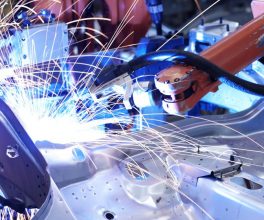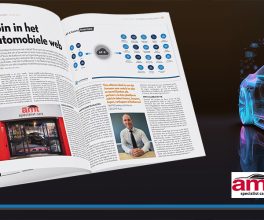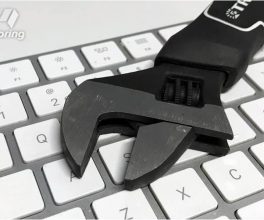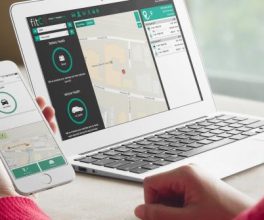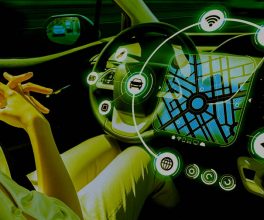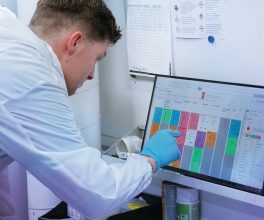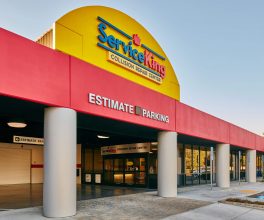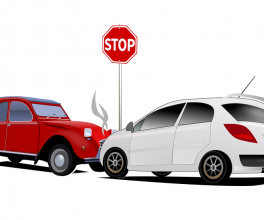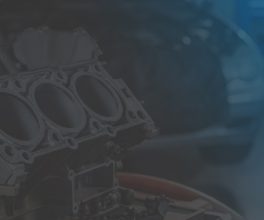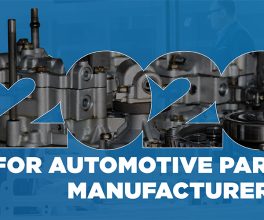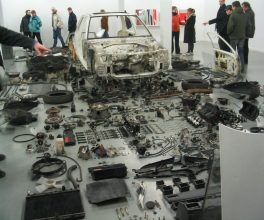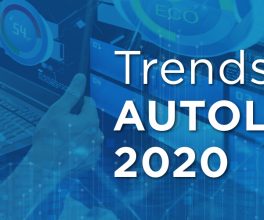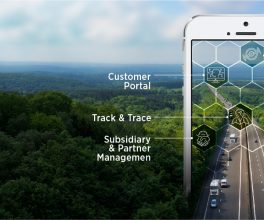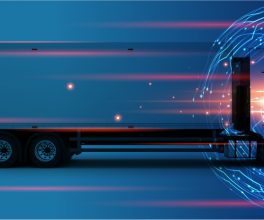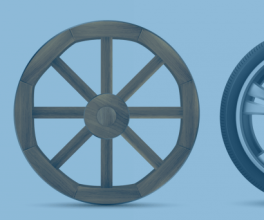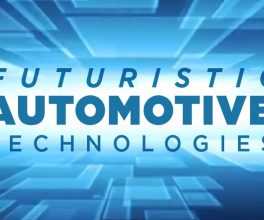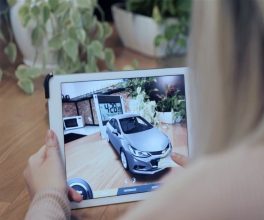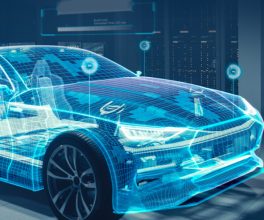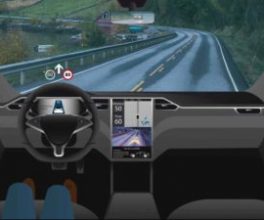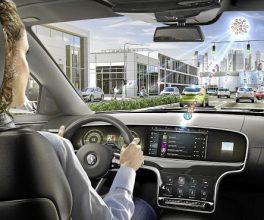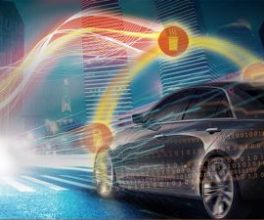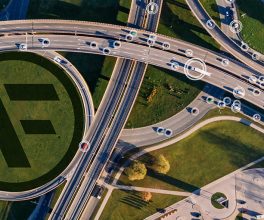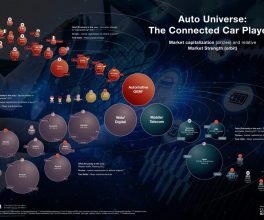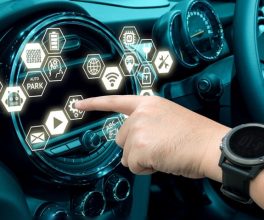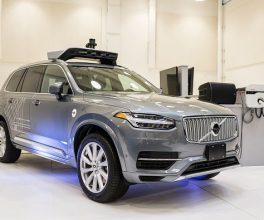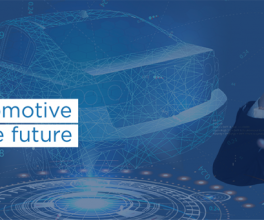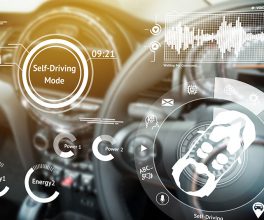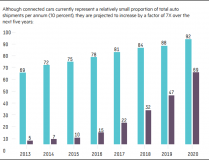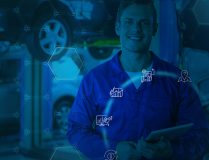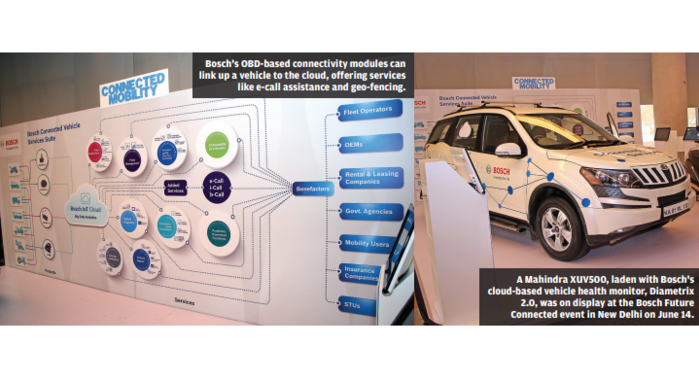By linking systems inside and outside the vehicle to intelligent mobility solutions, technology products and services provider Bosch is looking to make the driving experience a smarter one and empower Industry 4.0 as the path to a connected shopfloor.
Connected mobility, smart manufacturing, Industry 4.0 and 3D printing are new-age tech buzzwords which are fast becoming part of the automotive lexicon. The world over, vehicle manufacturers as well as component suppliers are exploring the potential of deriving long-term benefits and a competitive advantage from applying these technologies.
Bosch has, for long, been a proponent of connected mobility and Industry 4.0. Last month, at an event in New Delhi, the supplier showcased its outlook of a well-integrated future which would disrupt some of the most indispensable areas of work and utilise the power of connectivity to bring in a sophisticated level of data integration.
The impact, the company says, would be felt across diverse fields ranging from smart cities, healthcare, agriculture, mobility and manufacturing, which would form a fully connected ecosystem of devices and services in the coming future.
SMART, CONNECTED MOBILITY AS A TOOL
Smart mobility, which has drawn the attention of several global automakers, along with telematics and other Internet of Things (IoT) technologies, is set to unleash the winds of change in the automotive industry. The penetration of digital technology would see vehicles not only communicate with humans in a more interactive manner, but would also get ‘talking’ to each other in the language of data.

As Jan Oliver Röhrl, executive vice-president, Bosch, says, “Mobility is leaping towards becoming connected, automated, shared, electrified or energised, as some would also like to call it that way. Connectivity is the last binding tool to make all of this possible and its presence is quite inevitable inside a vehicle, as it then performs the roles of communicating inside the car, from car-to-car and with car-to-infrastructure as well.”
The company’s connected mobility technologies include an increased focus on vehicle safety by enabling a range of On Board Diagnostics (OBD) devices to become capable of performing numerous activities including vehicle tracking, speed monitoring, fuel pilferage checks, vehicle diagnostics, geo-fencing and emergency support calls.
Bosch has been working on its Diametrix 1.0, Diametrix 2.0, Tripmetrix 1.0 and iTraMS IoT-enabled connected solutions for all vehicle segments. Its ‘Digisense’ system, developed with Mahindra & Mahindra for application in tractors, is already out at work in farms, working in close to 5,000 tractors.
Currently, a number of these systems find significant application in the commercial vehicle (CV) space and have been quite popular at the grassroot level, offering immense support for the day-to-day operations of small, medium and large business owners, including rental and leasing companies, government agencies and STUs.
The different hardware devices fit into the vehicle’s OBD-II port and connect to the cloud, clinging on to a mobile network through a telecom operator’s SIM. With Diametrix modules designed to run system checks and Tripmetrix getting GPS sensors built-in, the equipment can then beam vehicle statistics over to the cloud server for it to be stored, analysed, and then channelled to the fleet owner’s mobile device, giving complete control to monitor a vehicle, by providing information about the vehicle’s whereabouts, as well as its speed, fuel and driving pattern details.
The connected platform also brings the capabilities of real-time system diagnosis, which continuously monitors a vehicle’s health and, in the event of a breakdown, provide detailed information about the end malfunction point, allowing for quick repair and resolution by sending the necessary data to the workshop even before the vehicle enters the workshop.
Leveraging such powerful technology tools can thus help better manage fleets by keeping an eye on various parameters like driver behaviour and allow for enhanced fleet productivity by reducing vehicle downtime. A detailed record of individual driving patterns would also, in future, enable insurance companies to offer variable policy rates, based on one’s track record of driving.
Bosch has also developed an emergency call (e-call) system which, in case of a mishap, utilises the OBD device’s acceleration sensors and intelligent embedded algorithms to detect an accident. It then transmits the data to the back-end IT system, enabling an immediate response action to be taken by contacting the nearest emergency services to reach the accident site.
The company has mapped close to 80 percent of India by tying up with last-mile ambulance services as well as hospitals to offer instant emergency support to vehicles on road. There is also the integration of breakdown call (b-call) and concierge call (i-call) facilities into its list of interactive services on offer, on the go.
ADAS AT WORK

Taking a bigger step forward in the direction of connectivity improving vehicle and road safety are the company’s Advanced Driver Assistance (ADAS) systems which deploy modules like Adaptive Cruise Control, Automated Emergency Braking, Driver Alert and Blind Spot Detection, to name a few. While European markets are quite advanced and are already witnessing the implementation of these systems in vehicles plying on road, in India there need to be some pre-requisites to fully endorse such technologies.
According to Röhrl, “I don’t speak about the affordability part yet, but there are infrastructural requirements like providing clear lane demarcations, which let the artificial eyes of the car detect them easily. On top of that is the human discipline which is also needed to let these systems work in conjunction with the driver.”
He also believes that “development is an evolutionary process. No one expects that it would happen overnight, and it is also quite fair for India to be taking its time. But, at the same time, things which are doable right away, like e-call assistance, should be utilised immediately to start improving the scenario of road safety in the country.”
COST SAVINGS WITH INDUSTRY 4.0
Connectivity on the shopfloor can bring in some phenomenal benefits in the form of flexible production processes, greater efficiency of materials and complexity reduction. Bosch is currently betaimplementing a number of these cloud-based tools in its 15 of its facilities in India.
The initial rewards are extremely positive and would be of absolute significance to any firm even if it were to be only seen from the point of view of just the operational costs. By constantly monitoring the power consumed by machinery at its plants, by deploying connected sensors that transmit data to the centralised cloud centre, Bosch has been able to precisely monitor even the slightest of deviations in the functioning of some of its machines.

According to Vijay Ratnaparkhe, president and managing director, Robert Bosch Engineering & Business Solutions (RBEI), “Considering this as the most basic example of what Industry 4.0 methods could bring to the assembly line, the company has been able to bring a good 8-10 percent of savings in its energy consumption. By any given standards, this is a terrific achievement and gives a clear indication about the potential of working in an integrated machine environment.”
Connected manufacturing deploys sensors at multiple checkpoints, streaming data to the cloud, which then is analysed to take highly critical decisions, keeping in loop all the entities associated with the manufacturing. It thus connects vendors, inventory docks, shopfloor, quality control and aftersales, to be running in sync with each other, with the best efficiency possible, leading to a proper streamlining of the system.
The major benefits of such digitally linked processes include transparent data flow and management, leading to quicker decision making and enhanced productivity, with access to real-time relevant data directly by each individual involved in the operations.
While there are no doubts about the manifold benefits of Industry 4.0, impediments like the initial costs would still need to be addressed before companies in India think seriously about implementing smart manufacturing methodologies.

According to Soumitra Bhattacharya, president, Bosch Group India, “With size no bar, all sorts of companies, including MSMEs, are going to benefit from the underlying transparency in data flow and advantages of Industry 4.0. It is going to be one revolutionary tool, where investments of the industry would be directed in the future.”
(This article was first published in the July 1, 2017 print edition of Autocar Professional)
Author – Mayank Dhingra
Courtesy of AutoCar Professional

